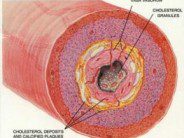Human papillomavirus (HPV) is a virus that infects humans and can cause warts and cancers of the cervix or genitalia. There are over 200 types of the virus and the majority does not cause disease. A minority of subtypes of the virus can cause pathology, with HPV infection occurring in almost every case of cervical cancer. The Papanicolaou (Pap) test is used to identify abnormal cells in the cervix of sexually active women in an attempt to identify precancerous and cancerous lesions. The Pap smear test has reduced the incidence of cervical cancer in the United States and in other parts of the world. Between the years of 1955 and 1992, the cervical cancer death rate decline by 70% in the United States due to the use of the Pap smear test. Despite the routine use of the Pap smear test in pelvic examinations, there were over 12,200 new cases of cervical cancer diagnosed in the United States in 2010. In addition, an estimated 4,210 women will die of cervical cancer in 2010 in the United States. HPV types 16 and 18 cause the majority of cervical cancer cases. There are currently two vaccines available to prevent infection by HPV viruses. Cervarix, manufactured by GlaxoSmithKline, protects against HPV types 16 and 18. Gardasil, manufactured by Merck, protects against HPV types 16 and 18 and against HPV types 6 and 11, which cause genital warts. The vaccine is usually given before individuals become sexually active because the vaccine has no effect on existing HPV infections. Researchers lead by Dr. Julia Brotherton reported in the June 18 issue of the Lancet that the HPV vaccination program in Australia decreased the incidence of high grade cervical abnormalities by 38% in Australian females. In Australia, the HPV vaccination program was introduced for women aged 12 to 26 years of age between the years of 2007 and 2009. The researchers of the Lancet report analyzed cervical cancer trends in women in Victoria, Australia before and after the start of the HPV vaccination program. Data from the Victorian Cervical Cytology Registry was used between the years of 2003 and 2009 and the incidence of high grade cervical abnormalities and low grade cytological abnormalities was analyzed. After the introduction of the vaccination program, the researchers found that the incidence of high grade cervical abnormalities decreased by 38% in females younger than 18 years. There was no similar decline observed for low grade cytological abnormalities or for high grade cervical abnormalities in older females. The researchers wrote, “Our finding that the decrease in [high grade cervical abnormalities] incidence occurred in the youngest vaccination cohort before it occurred in the older, catch-up cohorts (who were more likely to have been previously sexually experienced) reinforces the appropriateness of the targeting of prophylactic HPV vaccines to preadolescent girls”. The authors concluded, “Linkage between vaccination and screening registers is needed to confirm that this ecological observation is attributable to vaccination and to monitor participation in screening among vaccinated women”. The data presented are remarkable and highlight the dramatic results that can be obtained with an effective vaccination program. Nations throughout the world should attempt to replicate these results in an effort to lower the incidence of cervical cancer.
Reference:
Brotherton JML, et al. “Early effect of the HPV vaccination programme on cervical abnormalities in Victoria, Australia: An ecological study” Lancet 2011; 377: 2085–92.










 DrSamGirgis.com is a blog about medicine, nutrition, health, wellness, and breaking medical news. At DrSamGirgis.com, the goal is to provide a forum for discussion on health and wellness topics and to provide the latest medical research findings and breaking medical news commentary.
DrSamGirgis.com is a blog about medicine, nutrition, health, wellness, and breaking medical news. At DrSamGirgis.com, the goal is to provide a forum for discussion on health and wellness topics and to provide the latest medical research findings and breaking medical news commentary.
{ 1 comment… read it below or add one }
Yes!